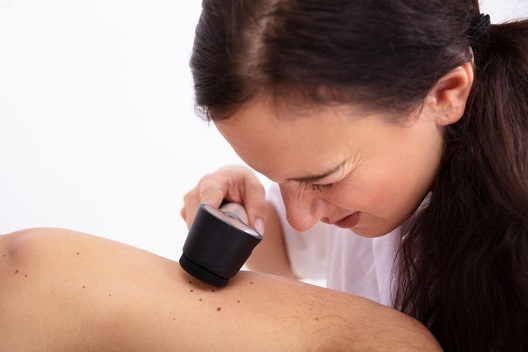What is a mole?
Moles are clusters of melanocytes (the cells that produce the skin’s color) that collect in the top layer of skin. A typical mole can be flat or raised, skin-colored or darker, round or oval. An atypical mole is a noncancerous mole that has some characteristics of an early melanoma, which is a dangerous form of skin cancer.
When is a mole not just a mole?
It can be hard to spot the differences between a typical mole and an atypical or cancerous mole. To make it easier, remember these A, B, C, D and E characteristics:
Asymmetry
A typical mole will have an almost perfectly round or oval shape. Atypical moles and melanomas may have an irregular shape—if you drew a line through the middle, the two halves wouldn’t match.
Border
While a typical mole will have a smooth, clearly marked border, the edges of an atypical or cancerous mole may be ragged or kind of blurry, so that it fades right into the skin around it.
Color
Typical moles are the same color all over, whether that’s skin-colored, tan or brown. Melanomas and atypical moles often have color variations, from tan to brown, black, red or even blue.
Diameter
A typical mole is usually no larger than a pencil eraser, so anything larger than that could be a warning sign of something else. Melanomas can be smaller than this, though, so don’t use size as the deciding factor.
Evolution
A typical mole tends to stay the same throughout your life. If a mole changes in appearance, grows larger, or suddenly appears in adulthood, this could be a sign of cancer. In fact, any changes to the way a patch of skin looks or feels should get your attention.
Keep an eye on your skin
To stay on top of any possible changes, you should check your skin all over—from your scalp to the soles of your feet—once a month. Your doctor may suggest that you have a full body skin exam from a medical professional every year or two, especially if you have moles or are otherwise at risk for developing skin cancer.




